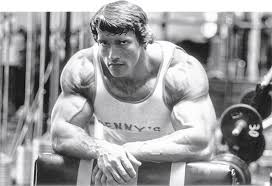
Take a look at the following physiques.
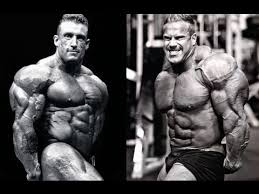
Do they inspire you? Do you want to become like them? With all due respect to Dorian Yates and Jay Cutler, many people, even those that go to the gym, do not find this look very attractive. They may be big and lean, but they’re unattractive or unaesthetic as bodybuilders call it, or are they? Before I discuss what some believe separates a grotesque hulk from aesthetic eye candy, we need to define the terms or what we’re looking at here.
This post is probably not for everyone, so I am going to start this article at the end with my take home messages. These messages are applicable to all of you who wish to improve your body composition using weight training methods,
Take Home Messages
•Define your goals concretely and be honest. It’s more effective to train one quality at a time than to try to be good at everything.
•If you are training for aesthetics, mass or to generally look good, you are a bodybuilder and you should train like one. Muscle mass is muscle mass. It doesn’t matter if you want to look like Brad Pitt or Ronnie Coleman until you reach that goal, the training focus is the same. Maximise muscle and minimise fat.
•Be aware that your aesthetic preferences can change over time. A goal of being 100 kg or 220lb at 10% body fat is completely arbitrary, as is trying to match your anthropometry to certain nonsense proportions. Long term goals may work for some, but in the short term the goal is always just to progress.
•Muscle mass and body fat percentage are basically the only things you can control about your physique’s appearance. You have less control over proportions and symmetry and if you are maximising whole body hypertrophy using a balanced program, those things tend to take care of themselves. Don’t worry about your biceps peak or the shape of your abs, just train for bigger biceps and less fat. Genetics are given, blame / thank your parents. You can’t change them, so don’t worry about them.
For those of you who want a little more information please read on and we will delve a little further.
The Definition of Bodybuilding
I have heard commercial gym managers say “We’re OK with guys using weights but we don’t want big bodybuilders here. Most of our members just want to lose fat and build some muscle or get toned.”
I believe this to be a play of words, It is like saying “I play rugby, but I’m not a rugby player?” In my opinion the difference between a professional bodybuilder and a guy looking to get ‘toned’ is that the bodybuilder is more successful. Both go to the gym to build muscle and lose fat and that is the very foundation of bodybuilding, maximise muscle and minimise fat. Obviously there are other factors, like symmetry and proportions, but building muscle is the foundation. Bodybuilding is no more than re-compositioning your body.
Like it or not, if you lift weights to improve the way you look, you are a bodybuilder. You may not be a professional or competitive bodybuilder, but you are still a bodybuilder. The only reason people don’t like to call themselves bodybuilders is the social stigma attached. People just don’t want to be associated with guys giving up their social lives to work on their physiques, shaving and tanning their bodies and publicly posing in thongs. That’s fine, but it doesn’t change the fact they’re doing what you do, just so much more successfully, that other people travel to shows and pay good money just to watch them.
This social pressure not to be a bodybuilder is so deeply rooted by most people that they follow training programs designed for purposes other than their own. Anything not to show you’re training just to build muscle. They’re not bodybuilding, they’re training to get ‘fit’, ‘toned’ or ‘athletic’. Be honest, would you train if training had no effect on the way you looked? Would you trade 10 pounds of muscle to improve your blood pressure? Would you willingly get fat to be better at sports you’re not competing in?
Aesthetics
Personally I want to be as strong as I look, I try to remain athletic and focus on challenging my body. I try to get my clients to shift their focus from ‘aesthetic’ only goals (weight loss, body fat etc) and perhaps concentrate on improving physical performance. This way their body will adapt as their performance level increases and they will have a more pleasing ‘aesthetic’ look as a consequence of what their body can actually do, I talk about this in greater detail in another article I wrote entitled ‘What has happened to the fitness industry?’ I do however employ bodybuilding routines into my programmes when I want to maximise hypertrophy.
Now assuming you are in fact training to improve your physique, there is still the question of what you think is a good physique. As the cliché goes, beauty is in the eye of the beholder.
Many people start out skinny and think fashion models and endurance athletes have the best bodies imaginable. Anyone with a lean stomach and some chest muscle is considered perfect. Think Brad Pitt in fight club, many untrained men regarded his body to represent physical perfection.
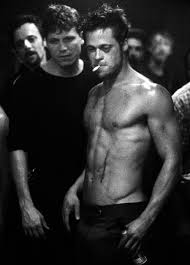
Once they make it past the beginner stages and start to train more than the mirror muscles (chest, abs, biceps), they gradually begin to like physiques with defined muscles. Think the spartans from the movie 300. This look embodied masculinity for intermediate trainees around the globe.
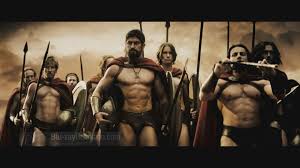
Once they become that size themselves, albeit usually less lean, they often start liking strength athletes, fitness models and natural bodybuilders. Notable exceptions are certain genetically blessed individuals, who see muscle gain as a normal result of playing around in the gym and consequently do not see muscular guys as extraordinary.
In other words, getting bigger changes your frame of reference of what is a normal physique and therefore changes your aesthetic preferences. However, there’s more to aesthetics than muscle mass. Two people with the same level of muscularity can look extremely different. So what makes a physique aesthetic?
As we are on the subject of bodybuilders lets look at the difference between classical and modern bodybuilders.
Let’s start with the difference between classical and modern bodybuilders.
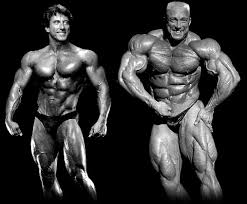
Bodybuilding, then and now.
Most people prefer the looks of the bodybuilders from the so called golden age of bodybuilding to the professionals of today. The guy pictured on the right Markus Rühl is at least 22 kg (50lb) heavier than Frank Zane and the main reason people dislike modern professional bodybuilders’ physiques is simply that they’re too deviant. I am not sure I agree with this comment however, it has been said on numerous occasions that most (not all) professional bodybuilders aren’t very handsome. Particularly when compared to the physique competitors. A pretty face can make a very muscular physique much more tolerable for many people. This could be down to the fact that modern professional bodybuilders often display unnatural growth in more tissues than just muscle due to the abuse of anabolic steroids and particularly growth hormone. Research shows that growth hormone can influence the growth of the hands and facial bones, particularly the jaw. Swollen internal organs are also a known side effect and can make even the leanest bodybuilders look bloated. Hair and skin can also be affected so it’s not surprising that most people don’t like the ‘growth hormone look’. Synthol, Esiclene, implants and other muscle volumizers further contribute to the unnatural look. Even with the greatest physique, artificial aids will begin to take their toll.
Most classical bodybuilders weren’t natural either, but today’s professional bodybuilders have taken it to a whole new level. So to sum up the factors that define current professionals’ physiques, we’re talking about people who have trained hours a week for years, have incredibly rare genetics, are on various steroids for at least half the year and use all sorts of artificial aids. Remember this next time someone asks you if you want to be that big. You never will be, no matter how hard you train or what you inject. People drastically underestimate the size of professional bodybuilders.
Even with somewhat less extreme cases, like Frank Zane many people will never achieve such a physique either, because not only does it take amazing bodybuilding genetics and steroids, every one of these professionals also had exceptional anthropometry / bodily proportions. Two of the most influential factors, over which you have no control, that determine your physique’s appearance are the relative length of your bones and the ratio of your muscle to tendon length.
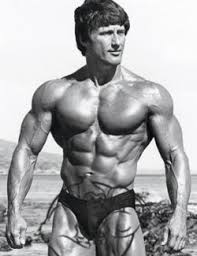
The relative length of your bones, or your skeletal frame, limits the proportions you can attain. You can make tremendous differences in the ratio of your waist to shoulder circumference, but you will always be limited by the width of your hips and your shoulders.
Also, look at how low the lats of Franco ‘The Bat’ Columbo originate from his back. Most people have lats that start half way up the spine. The Bat’s lats/wings start almost right above his hips, creating an amazing V-shape.
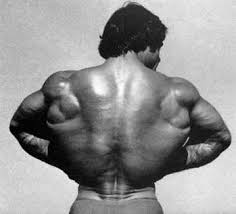
Aside from the length of muscles, their shape also affects their appearance. The biceps is one of the muscles with the highest variability in shape. Some people have biceps with a large peak and others do not. You can slightly increase your peak by preferentially training the long head of the biceps over the short head, but genetics play a much larger role than training. Look at the biceps of Arnold Schwarzenegger and Dorian Yates to see the difference in appearance caused by the shape of the biceps.
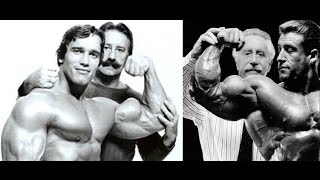
To sum up, there are many genetic factors that contribute to your physical appearance besides muscle mass and fat. This may sound depressing, but there are some general lessons to be learned from all this information. Here are my take home messages once more, thank you for reading and Happy Training…
Take Home Messages
•Define your goals concretely and be honest. It’s more effective to train one quality at a time than to try to be good at everything.
•If you are training for aesthetics, mass or to generally look good, you are a bodybuilder and you should train like one. Muscle mass is muscle mass. It doesn’t matter if you want to look like Brad Pitt or Ronnie Coleman: until you reach that goal, the training focus is the same. Maximise muscle; minimise fat.
•Be aware that your aesthetic preferences can change over time. A goal of being 220lb at 10% body fat is completely arbitrary, as is trying to match your anthropometry to certain nonsense proportions, such as the Golden Rule. Long term goals may work for some, but in the short term the goal is always just to progress.
•Muscle mass and body fat percentage are basically the only things you can control about your physique’s appearance. You have less control over proportions and symmetry and if you are maximising whole body hypertrophy using a balanced program, those things tend to take care of themselves. Don’t worry about your biceps peak or the shape of your abs, just train for a bigger biceps and less fat. Genetics are given. You can’t change them, so don’t worry about them.
That was a great read thanks man
LikeLike
Thanks buddy, appreciate the feedback
LikeLike